As of June 14, 2021, there have been seven reported sightings of the Loch Ness monster this year alone. Over 25 years, the Official Loch Ness Monster Sightings Register has recorded more than 1,130 alleged sightings.
Gary Campbell, who runs the Register, told the Daily Record that “the sightings are getting more credible all the time.”
We look back at some of the best and most famous sightings of “Nessie” through the ages and detail some of the theories of what this mysterious creature might be.
The first sighting was earlier than you might think
Astonishingly, the first sighting of a monster around Loch Ness dates to 565 AD. According to legend, Saint Columba and his followers came across a group of men burying a man whom, they alleged, had been mauled by a monster in the River Ness.
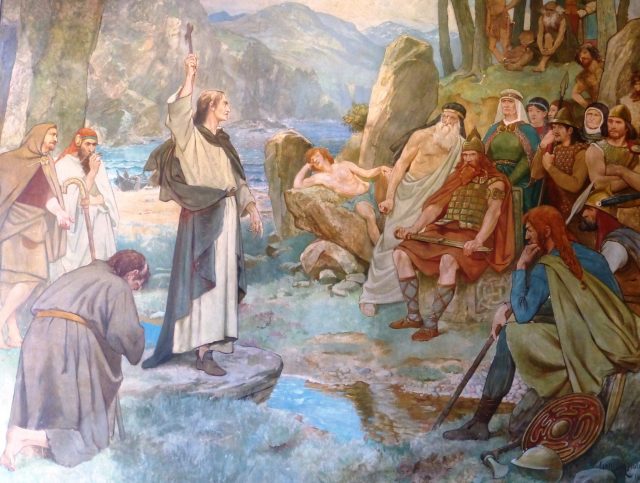
Intrigued, one of Saint Columba’s followers swam across the river, and the monster reared up, ready to attack him. But Saint Columba made the sign of the cross and declared: “Go no further. Do not touch the man. Go back at once.” The creature fled the scene.
A bonanza of sightings in the 1930s
The first sightings that really captured the public’s imagination took place in 1933.
George Spicer, a Londoner, was driving around the loch with his wife when they saw “the nearest approach to a dragon or pre-historic animal that I have ever seen in my life.” He added that it was fairly big and had a long neck. It crossed the road in front of their car, carrying something in its mouth.
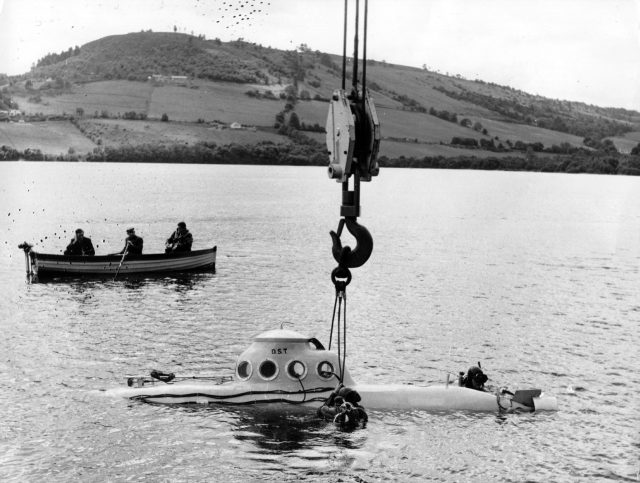
After an article about this was published in The Courier on August 4, 1933, other people started contacting the media about sightings of this creature. On November 12, 1933, Hugh Gray managed to take the first photograph of the Loch Ness monster. However, he’d been walking his dog that day, and some claim that the picture is just his dog fetching a stick from the loch. Others suggest that the blurry photograph actually shows an otter or a swan.
The next most notable sighting was that of Arthur Grant, a veterinarian student, in January 1934. One moonlit night, Grant nearly hit the creature while riding his motorcycle towards Abriachan. He described it as a cross between a seal and a plesiosaur, with a small head attached to a long neck.
When Grant produced a sketch, zoologist Maurice Burton declared that the appearance and behavior were consistent with that of an otter, and that perhaps poor lighting accounted for the appearance of a long neck.
The most famous photograph was inspired by revenge
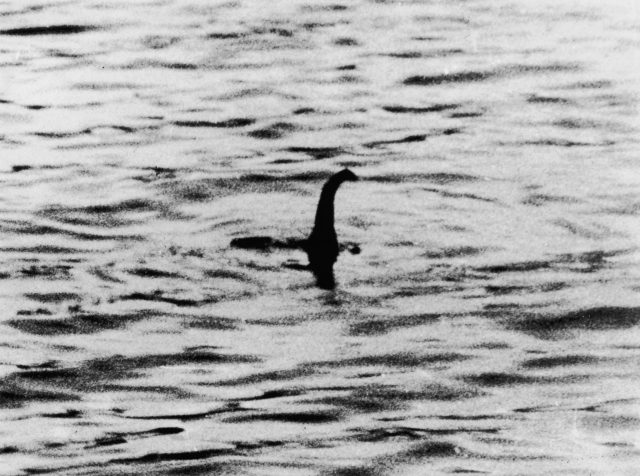
“The Surgeon’s Photograph” is the picture that is most often brought up when the Loch Ness monster is discussed. It reputedly shows the head and neck of the monster, and was supposedly taken by Robert Kenneth Wilson, a London gynecologist who didn’t wish to be named when he sold it to the Daily Mail.
For years, people believed it was real. Arguments that it might be driftwood, a bird, or another otter held little sway. But in the 1990s, it was exposed a hoax in the book Nessie — the Surgeon’s Photograph Exposed.
Marmaduke Wetherell was an actor and game hunter. After being ridiculed by the Daily Mail for presenting faked “Nessie footprints,” he decided to get revenge. With his son and son-in-law, Marmaduke created a fake monster using a submarine toy from Woolworths with a head and neck made of wood putty.
Four photographs were taken of it at Loch Ness. Once the pictures were developed, they were passed to Wilson, who enjoyed a good joke, to sell to the Daily Mail.
More pictures and even videos
The Loch Ness monster was now famous, and many people tried to take photos or videos of it. Some could be explained by unidentified floating objects or an unusual wave effect; others were clearly faked.
In May 1977, magician Anthony Shiels claimed to have enticed the monster out of the water, revealing it to be an “elephant squid.” However, his photographic proof was dismissed as a hoax because of a lack of ripples in the water.
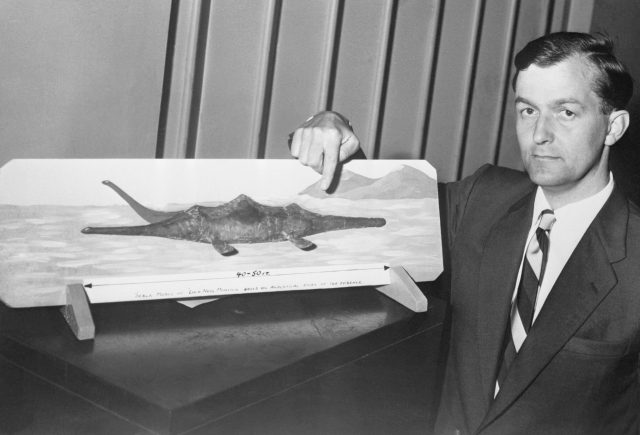
Tim Dinsdale, an aeronautical engineer, filmed a hump with a wake behind it in 1960. While many thought this film to be faked, examination of it in 1993 for Discovery Communications’ Loch Ness Discovered documentary suggested otherwise. Examination of the negative revealed a shadow that was not obvious in the developed photograph and looked like the rear body of an underwater creature.
Footage from 2007 shot by laboratory technician Gordon Holmes showed a “jet black thing, about 14 meters (46 feet) long, moving fairly fast through the water. While marine biologist Adrian Shine described it as “the best footage [he had] ever seen,” he went on to suggest that it might be an otter, seal, or water bird.
Search for a monster
Scientists and the public couldn’t resist the chance to see if they could prove or disprove or disprove the existence of Nessie.
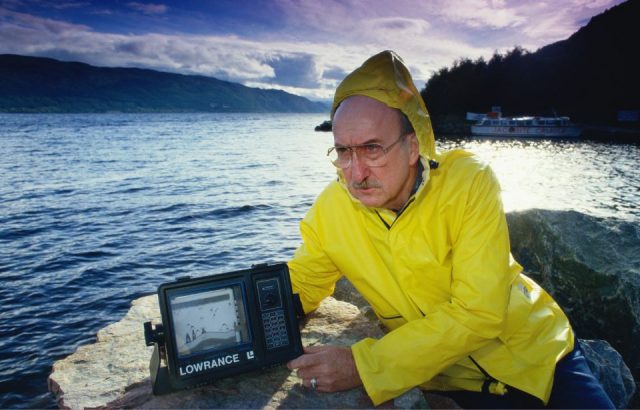
Tom Stoddart Archive / Contributor via Getty Images)
In the summer of 1934, 20 men with binoculars watched the lake from 9 a.m. to 6 p.m. for five weeks but found nothing conclusive. The Loch Ness Investigation Bureau (LNIB) operated from 1962 to 1972, encouraging groups of volunteers to watch the loch from various vantage points.
In 1954, sonar readings from the fishing boat Rival III recorded something large keeping pace with them at a depth of 146 meters (479 feet).
In 1968, D. Gordon Tucker from the University of Birmingham collaborated with the LNIB to create a sonar “net” across the loch. Multiple readings were obtained over two weeks, and while one could be written off as a shoal of fish, other readings were more mysterious.
Sonar studies carried out by Robert H. Rines in 1972, 1975, 2001, and 2008 produced some interesting images, including one that looked like a fin. However, there have been subsequent suggestions that this picture was “touched up” or altered. Other alternative suggestions for Rines’s photos include two animals swimming together, sediment, and submerged logs or tree stumps.
Hoaxes exposed
While some photos and sightings might be put down to genuine mistakes, there are those who have deliberately set out to create a hoax.
In 1972, a team of zoologists from Flamingo Park Zoo in Yorkshire found what they thought was the monster floating in the lake. It was 4.9–5.4 meters (16–18 feet) long and had a brown scaly body with fins.
When they tried to remove the body, the police seized it, citing an act of parliament that prevents “unidentified creatures” from being removed from Loch Ness. It turned out to be the shaved and disfigured body of a bull elephant seal that the education officer at Flamingo Park had dumped in the water to fool his colleagues.
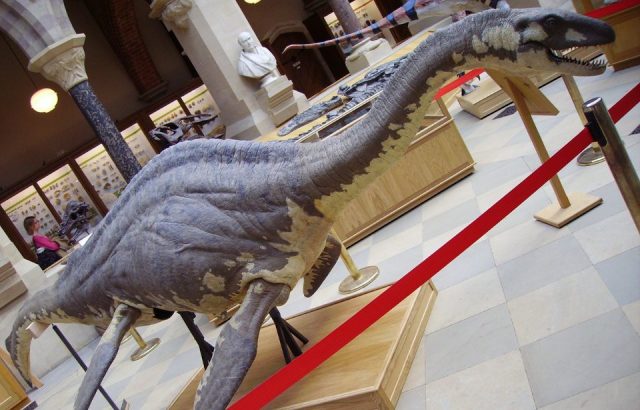
In 2004, a Five TV documentary team constructed an animatronic plesiosaur and put it in the lake, resulting in 600 sightings. A year later, a “tooth” from the monster was found to be a deer’s antler, with the whole thing revealed as a stunt to promote a horror novel called The Loch.
Eels but not otters
As the years have gone by and technology has improved, there has been less and less evidence of a monster in the loch.
In 2003, the BBC sponsored a search of the loch. Using 600 sonar beams and satellite tracking, it was possible to identify items as small as a buoy. The investigation found no animals of significant size.
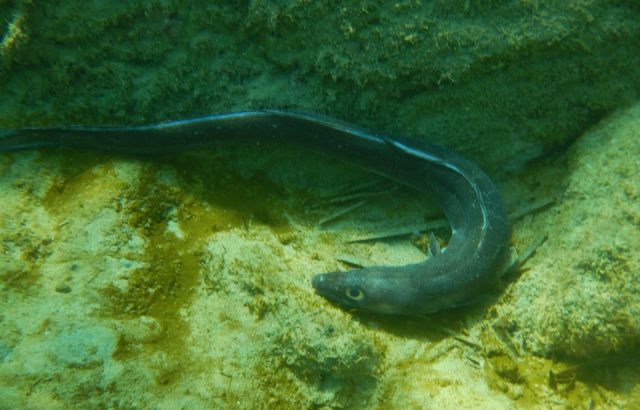
In 2018, scientists checked DNA found in the lake. Surprisingly, given how many photographs had been dismissed as otters or seals, no DNA residue from either of these species was found. There was no DNA related to large fish, like sharks, either, but the results did show a large amount of eel DNA.
It was possible that this was simply because of a substantial number of small eels living in the lake, but Professor Neil Gemmell from the University of Otago, who led the study, told the BBC: “So – are they giant eels? Our data doesn’t reveal their size, but the sheer quantity of the material says that we can’t discount the possibility that there may be giant eels in Loch Ness.”
Explanations over the decades
When a photo of the monster emerges, skeptics must find a way to explain what that photo is if it’s not a monster. Alternative explanations have taken in all kinds of animals. When the loch is calm and free of boats, evidence of wakes in the water has been put down to submerged birds.
In an effort to explain the Surgeon’s Photograph, two scientists in 1979 suggested that what everyone took to be a head and neck was actually the trunk of a swimming elephant. They suggested that the picture had been taken elsewhere and then simply stated to be Loch Ness. However, in 2006, a paleontologist and artist suggested that maybe traveling circuses paused to allow elephants to bathe in the loch.
A Greenland shark, sturgeons, and extraordinarily large Wels catfish have also been suggested as looking like a monster, while algae or zooplankton have been advanced as explanations for strange sonar readings. Inanimate objects such as submerged trees, unusual ripples, and optical effects have also been cited.
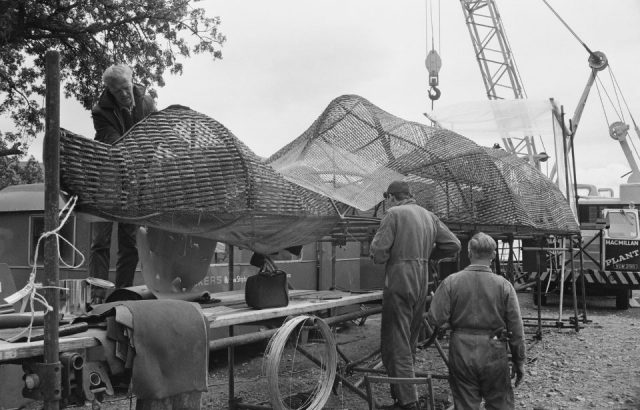
A model of the monster used in the 1969 movie The Private Life of Sherlock Holmes sank on July 22. Reports say that the director had to comfort the special effects artist, Wally Veeners, as his creation sank into the water. There are suggestions that some of the sightings could be this lost model, the final location of which was discovered in 2016 thanks to sonar.
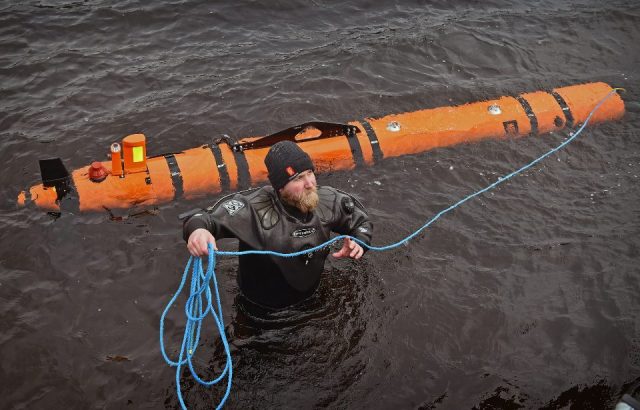
The idea from the 1930s that the monster was a plesiosaur has been discredited in several ways. For a start, the bones in a plesiosaur’s neck wouldn’t allow it to lift its head out of the water “swan-like.” Furthermore, a plesiosaur would have to surface several times a day to breathe, which would have resulted in far more sightings.
Sightings continue today
Belief in the existence of the Loch Ness monster continues today. There was intense excitement when a huge skeleton was discovered on a beach 120 miles from Loch Ness after Storm Ciara. But it was later confirmed that it was the remains of a Minke whale.
The Official Loch Ness Monster Sightings Register receives on average around 10 unexplained sightings a year (so far this year, there are already seven sightings). Since about 400,000 people visit the area every year, this means sightings are still a rarity. Gary Campbell told the Daily Record that: “Anything that is later proved to be a hoax or can be subsequently explained is removed from the register.”
In July 2019, a Facebook event called “Storm Loch Ness” went viral after the event Storm Area 51 saw tens of thousands of people descend on the Air Force base to try and uncover evidence of UFOs. With 18,000 people saying they were going to Storm Loch Ness and another 38,000 listing themselves as interested, the Loch Ness RNLI had to issue stern warnings not to do so.
More from us: The Real-Life ‘Jaws’ Of The Jersey Shore
The organization said their rescue services could not cope with that many people at once and reminded attendees that the depth of the loch was two and a half times the height of the Big Ben tower with water temperatures of 6°C.
In case Nessie was ever found, Scottish Natural Heritage put in place a code of practice in 2001. This code stipulates that a DNA sample should be taken from the creature before it is released back into the loch.
